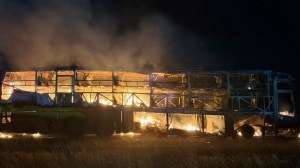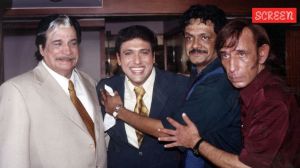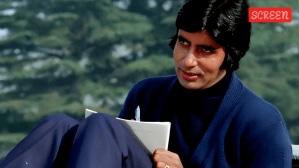Pomp and Circumstance
The durbar photographs offer more than a lavish spectacle. They intend to celebrate the empire
Book: Power and Resistance
Editor: Julie F. Codell
Publisher: The Alkazi Collection of Photography/Mapin Publishing
Pages: 215
Price: Rs 3,500
The French have a monopoly on elegance and savoir faire,the Italians on style,the Americans on conspicuous consumption,while the British do pomp and pageantry like no one else. Much of that has to do with the legacy and trappings of the empire and its over-the-top displays of wealth,power,allegiance and fealty. Pomp was best illustrated by circumstance,as in the Delhi coronation durbars staged to mark the formal crowning of British monarchs as emperor and empress of India. There were three: in 1877 (Victoria),1903 (Edward VII) and 1911 (George V),a lavish marriage of imperial politics and a celebration of the Raj,enlivened,visually,by the galaxy of maharajas wearing the Order of the Star of India on their bejewelled chests.
Each durbar took months of preparation and spanned a fortnight,all captured for posterity by the foremost photographers of the time,British and Indian. Many of these form part of the Alkazi Collection,a treasure trove of over 90,000 images,amassed by theatre legend Ibrahim Alkazi.
That rare archive is now being made available to a wider audience through a series of coffee-table books,this being the latest and possibly the richest in terms of visual treat. The coronation durbars used spectacle to hide imperial politics and intrigue under a dazzling display of royal extravagance,unity and entertainment. The famous photographers of the time Bourne & Shephard,Vernon & Co,Raja Deen Dayal,Frederico Paliti among others conveyed a historical and cultural narrative as well as a counter narrative. The 1877 durbar for instance,was partly intended to bring a closure to the tensions generated by the 1857 Revolt,while justifying the need for British rule. Equally,the durbar,as the then viceroy of India,Lord Lytton,pointed out,conspicuously places her (Victorias) authority upon that ancient throne of the Moguls. Politics by pomp was clearly the central theme since all three durbars were the creation of the viceroys Lytton,Curzon and Hardinge. In fact,only one of the durbars was attended by the king and the queen personally: in 1911,by George V and Queen Mary.
The durbar itself was adopted from the tradition practised by the Indian royalty which involved hearing petitions from subjects,making announcements,exchanging gifts. All these were incorporated into the coronation durbars that were held in what is now the disused Coronation Park in Delhi.
It was a photographers paradise,even with the limited technology of the time,and this book is further embellished by rare illustrations,paintings,postcards and commemorative brochures. The photographs,however,form part of a larger sociocultural history,with the pageantry linked to fantasy and assumptions about India and the British rule. The visual effect was to portray a utopian empire and celebrate a joined history. What add to the books value are essays that focus on the role of durbar photographs and the complexities of colonial power and pelf. What the book really captures are the overt and hidden meanings of the Empire.



- 01
- 02
- 03
- 04
- 05



























